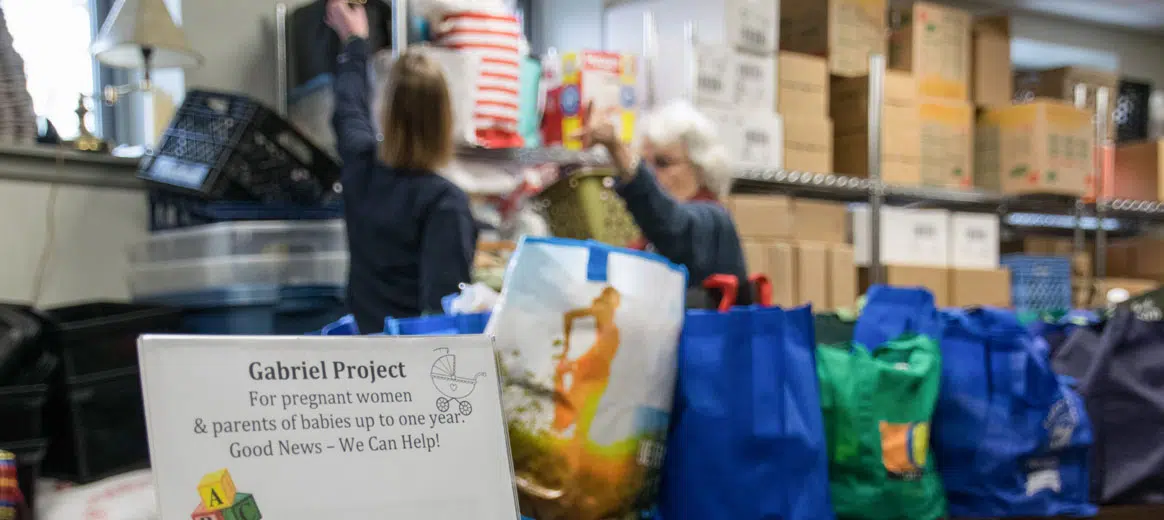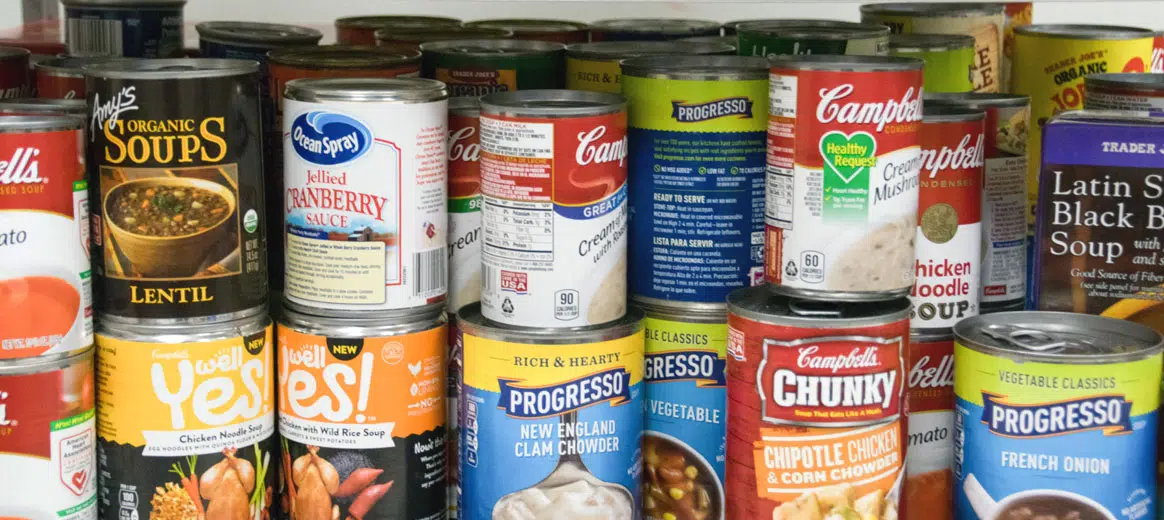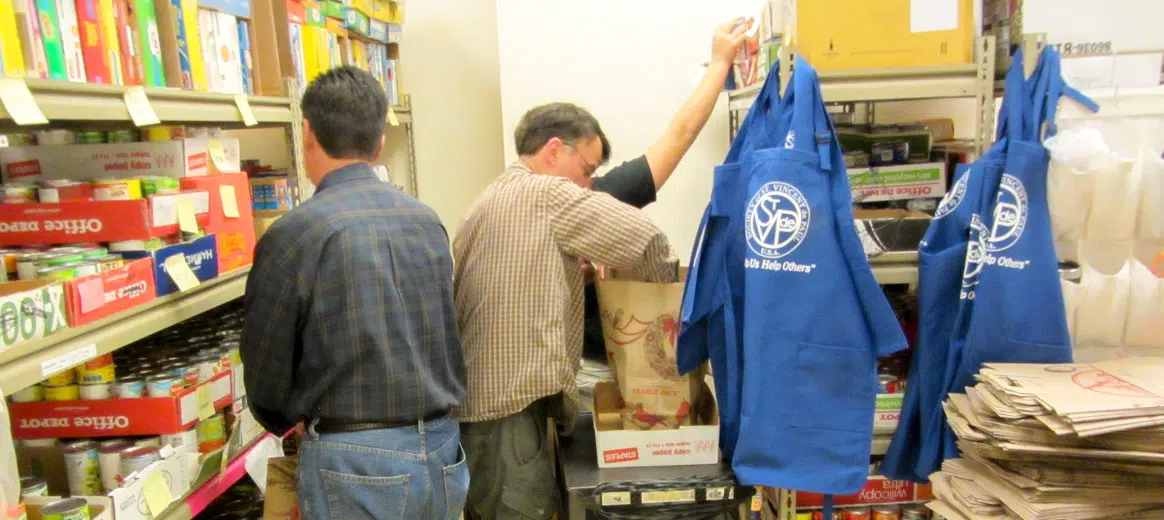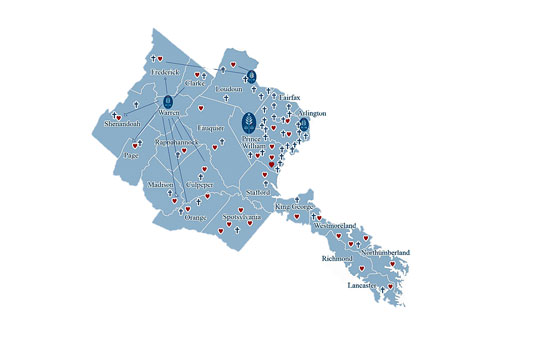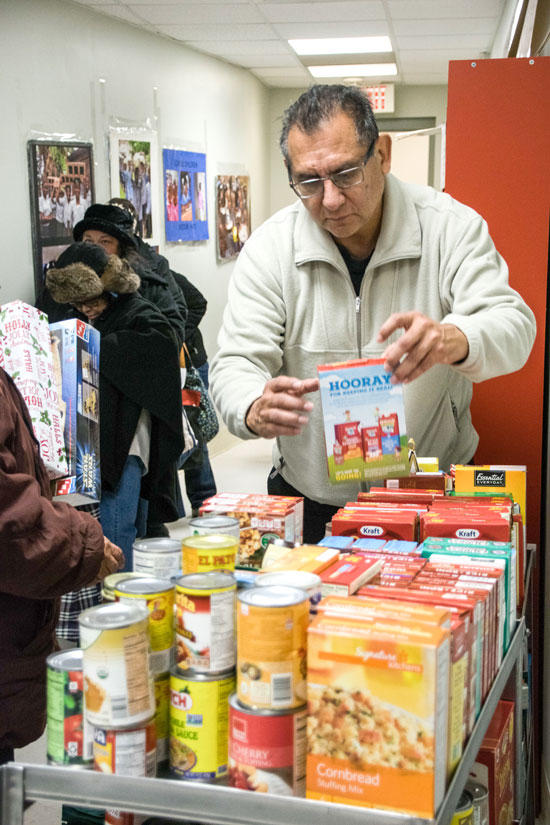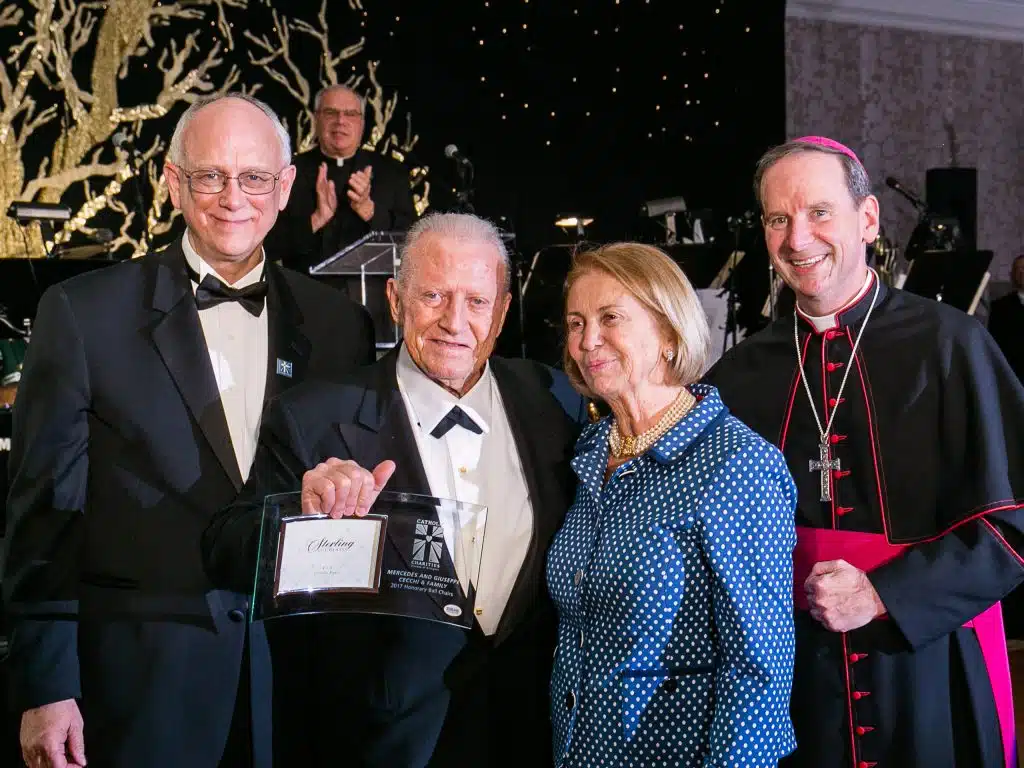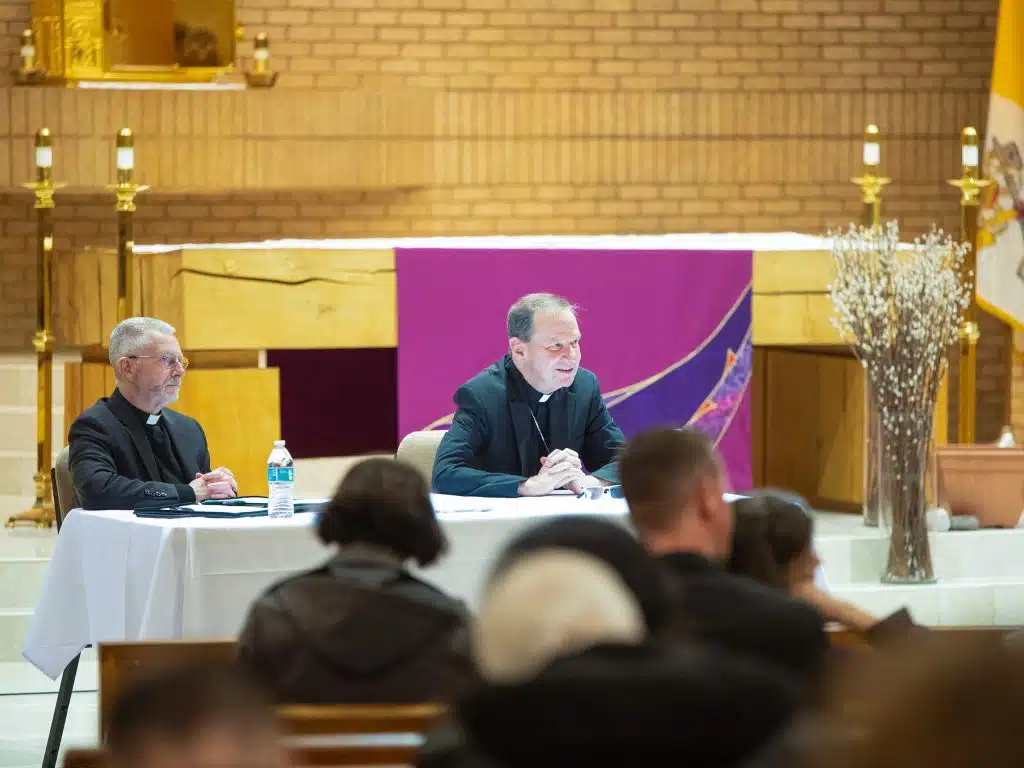Seeing the mansions that grace the rolling hills of Loudoun
County, it’s not a stretch to think the area is one of the richest in the
country. It is, in fact, the wealthiest county in the United States based on
median household income. Four other counties in the Arlington Diocese top Forbes’ list of 10: Falls Church City, Fairfax County,
Arlington County and Prince William County. Yet in this land of plenty, hunger
is still prevalent.
Take for example, Fairfax County, where less than 6 percent of the
population is food insecure. Yet that percentage represents more than 60,000
people. Rural areas have greater widespread hunger. In the Northern Neck,
Westmoreland County has a more than 13 percent rate of food insecurity
according to Feeding America, a national hunger-relief organization.
In her work as the food pantry director at Congregational Community
Action Project in Winchester, Frances Salmon sees hunger on a daily basis. “Children
go to bed hungry every single night, adults don’t eat for days, and that’s the
reality of it,” she said. “It is one of the sad things we deal with and it is
heart-wrenching.”
Fortunately, there are dozens of food pantries in the diocese,
including 22 run by Catholic churches. The progress of Catholic, interfaith and
community pantries alike help curb the complex plight.
The logistics of stopping hunger
Handing a sandwich to a homeless man or donating a bag of
groceries to a needy family is perhaps the first thing that comes to mind when
people think of charity. There’s a reason “feeding the hungry” is the first of
the corporal works of mercy. But getting food to those who need it is simple in
theory but more difficult in execution.
Salmon, who works for Action Project, describes her work as
“managing chaos,” with food donations for the pantry coming from a variety of
sources. The organization has partnerships with local grocery stores and
restaurants who donate food, “a whole slew of churches,” such as Sacred Heart
Church in Winchester, and individual people and charities, such as Hunters for
the Hungry, who donate venison.
Hearts on this map represent food pantries supported by St. Lucy’s Project while crosses represent parishes.
The pantry buys discounted bulk food from Blue Ridge Area Food
Bank and also receives food from the diocesan Catholic Charities St. Lucy’s
Project. The quality, often name-brand “yummy” products St. Lucy donates are a
great blessing, said Salmon. “Our clients were so excited to see it.” When the
pantry run low on perishable essentials such as butter or eggs, Salmon will go
herself to purchase the items.
The Action Project is the largest food bank in the Winchester
area, but the smaller parish pantries around the diocese cobble together food
in similar ways. Working with a larger organization such as St. Lucy’s Project
is often an important way to keep the pantry stocked during shortages in the
summer and after the winter holidays. Right now, St. Lucy’s Project is in the
midst of visiting parish pantries to see what role they can play in forming a
food strategy for the area, said Vince Cannava, program director.
Finding space in a church to store the food is another
difficulty, especially for items that require refrigeration. Our Lady, Queen of
Peace Church in Arlington is undergoing renovations that will expand the size
of the pantry, said Michelle Knight, social justice and outreach minster. When
complete, it will be the first time in the pantry’s decades-long history that
they will have storage space solely for food.
A growing ministry
The food pantry at St. Paul Mission in Hague began in the old
church rectory, but over the years, the ministry has grown in many ways. Now,
the basement of the new rectory has a large, well-stocked food pantry and a
commercial size refrigerator, said Father Andrew J. Heintz, pastor.
With the help of Catholic Charities and Bishop Paul S. Loverde,
the community received grants to help. But much of their donations come from
parishioners, said Father Heintz. “I always say we’re a small parish with a big
heart.”
In part because of the work of the parish, people have a greater
awareness of the needs of the poor in their rural area. Besides the food pantry,
the community has responded by giving meals to several families on Thanksgiving
and Christmas, donating generously to the nearby free health clinic and hosting
a coat drive, among other things.
Oftentimes, Father Heinz will call the more wealthy parishioners.
Once, a Hispanic couple could not afford medication needed to help the woman
during her pregnancy. A parishioner immediately covered the cost. Another time,
a mother of five was in the hospital for Christmas, and parishioners brought
her children gifts. “She said her faith in humanity was restored,” said Father
Heintz.
The parish enjoys the personal contact with clients that comes
from having its own food pantry. “They feel like they’re making a difference,”
said Father Heintz. “They’re definitely living out the Gospel’s preferential
option for the poor.”
Peter Jimenez hands out packaged food to the needy at Our Lady, Queen of Peace Church in Arlington Dec. 21. Though the church is in an affluent county, more than 180 people come each week to receive bags of food.
At Our Lady, Queen of Peace, parishioners are the number one
source of food for the pantry. “At this parish we emphasize there is poverty
out there,” said Knight. “Part of the problem is, it is so expensive to live in
Arlington.” Yet the people who work in the county’s restaurants or clean its
homes still need a place in the community, said Knight. The pantry helps them make
ends meet.
‘A field hospital’
Eliminating hunger matters to Tammy Simpson because she was once
on the receiving end of that help. Now, she is president of the Society of St.
Vincent de Paul food pantry at St. Leo the Great Church in Fairfax.
The pantry began in October 1989 and Simpson joined in 2003. They
have two food distribution days a month, where they serve 159 individuals. Yet
Simpson’s passion is home visits.
“It starts with building a relationship with them, having them
trust us,” she said. “Our (St. Vincent de Paul) conference is big on (providing)
education, coaching and mentoring.”
In her visits, she has seen many people, especially seniors,
living in terrible poverty. One client had only one light bulb, which he moved
from room to room. An old woman was living off a can of beans, judiciously
counting out a small allotment each day.
Simpson’s work has taught her not to judge another’s situation,
but to help them. “The biggest thing is patience, (because change happens) on
God’s timing, not our own,” she said.
As with St. Leo, many pantries feed the hungry while looking for
ways to alleviate the underlying problems the needy face. On the days the Our Lady, Queen of Peace
pantry is open, a host of ministries are waiting to aid the clients. An hour
before the doors open, they set out pastries and coffee for the visitors. The
parish thrift store, Matthew 25, is open and representatives from Project
Gabriel offer diapers, wipes and baby clothes.
“From our perspective, food is a bridge,” said Cannava. Though
people come to eat, the connection with a parish or charity can give them
connections to mental health services, job training, financial assistance or a
host of other resources. Quoting Pope Francis, Cannava said, “We’re the field
hospital. Our ultimate goal is to transform (lives).”
